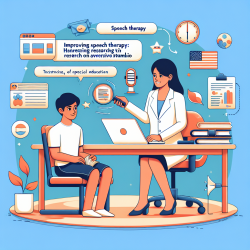Introduction
Listening difficulties in children, particularly in noisy environments, pose significant challenges for educators and clinicians. These difficulties often lead to referrals for auditory processing disorder (APD) assessments. However, the variability in symptoms and overlapping characteristics with other developmental disorders complicate the diagnosis and management of APD. Recent research, such as the study by Barry et al. (2015), highlights the potential of questionnaire-based measures to support clinical assessments.
The Role of Questionnaires in Clinical Assessment
The study evaluated the utility of the Evaluation of Children’s Listening and Processing Skills (ECLiPS) questionnaire in assessing children with suspected APD. The ECLiPS, alongside other questionnaires like Fisher’s auditory problem checklist, Teacher’s Evaluation of Auditory Performance, and the Listening Inventory for Education, was analyzed for its ability to capture symptoms of listening difficulties.
Results indicated that while all questionnaires were sensitive to listening difficulties, the ECLiPS demonstrated clearer construct validity, particularly concerning cognitive abilities. This finding suggests that the ECLiPS can provide valuable insights into the cognitive and auditory processing challenges faced by children.
Implementing Questionnaire-Based Measures
For practitioners, integrating questionnaire-based measures like the ECLiPS into the assessment process can enhance diagnostic accuracy. Here are some steps to consider:
- Incorporate Multiple Perspectives: Use questionnaires that gather insights from parents, teachers, and the children themselves to obtain a comprehensive view of the child's listening difficulties.
- Focus on Construct Validity: Choose questionnaires that demonstrate strong construct validity, ensuring they accurately reflect the cognitive and auditory processing challenges.
- Combine with Cognitive and AP Measures: Utilize a combination of ECLiPS factors, cognitive measures, and auditory processing tests to achieve the best discrimination between typically developing children and those with APD.
Encouraging Further Research
While the ECLiPS shows promise, further research is needed to validate its effectiveness in diverse clinical settings. Practitioners are encouraged to contribute to this research by documenting outcomes and sharing findings. Collaborative efforts can lead to more refined assessment tools and improved intervention strategies for children with listening difficulties.
Conclusion
Questionnaire-based measures like the ECLiPS offer a valuable addition to the clinical assessment of listening difficulties in children. By providing insights into cognitive and auditory processing challenges, these tools can support more accurate diagnoses and tailored interventions. Practitioners are encouraged to integrate these measures into their assessment protocols and engage in ongoing research to enhance clinical outcomes.
To read the original research paper, please follow this link: Use of Questionnaire-Based Measures in the Assessment of Listening Difficulties in School-Aged Children.










